In common with many people who travel for work, I keep a record of my journeys so that I can claim mileage expenses. For the last couple of years, that record has been a spiral-bound notebook (for driving) and Strava (for cycling) – though I haven’t actually claimed any mileage for cycling yet! I wanted to replace my analogue system with a smartphone app and, following a conversation a few weeks ago with my colleague Brian Cain (@BrianCainUC), I decided to create something using Microsoft PowerApps.
For those who are unfamiliar with PowerApps, it’s a technology solution provided by Microsoft to help normal business users – people who are not developers – to create simple applications to connect systems and data. The resulting apps can run on mobile devices, as well as on Windows 10.
PowerApps is available in my Office 365 subscription (though I think there are other ways to sign-up too) and I set to work creating my Mileage Recorder. A few minutes later I had something functional. Not long after that I had tweaked it to be pretty much what I needed. So I created an app in less than 30 minutes and it’s taken me three weeks to write this blog post! Hmm…
Creating my first PowerApps app
My app is a simple three-screen app – taking a table in an Excel Workbook from OneDrive for Business as a data source. PowerApps recognised the data types in the columns of the table and formatted accordingly, then I tweaked things a little in PowerApps Studio.
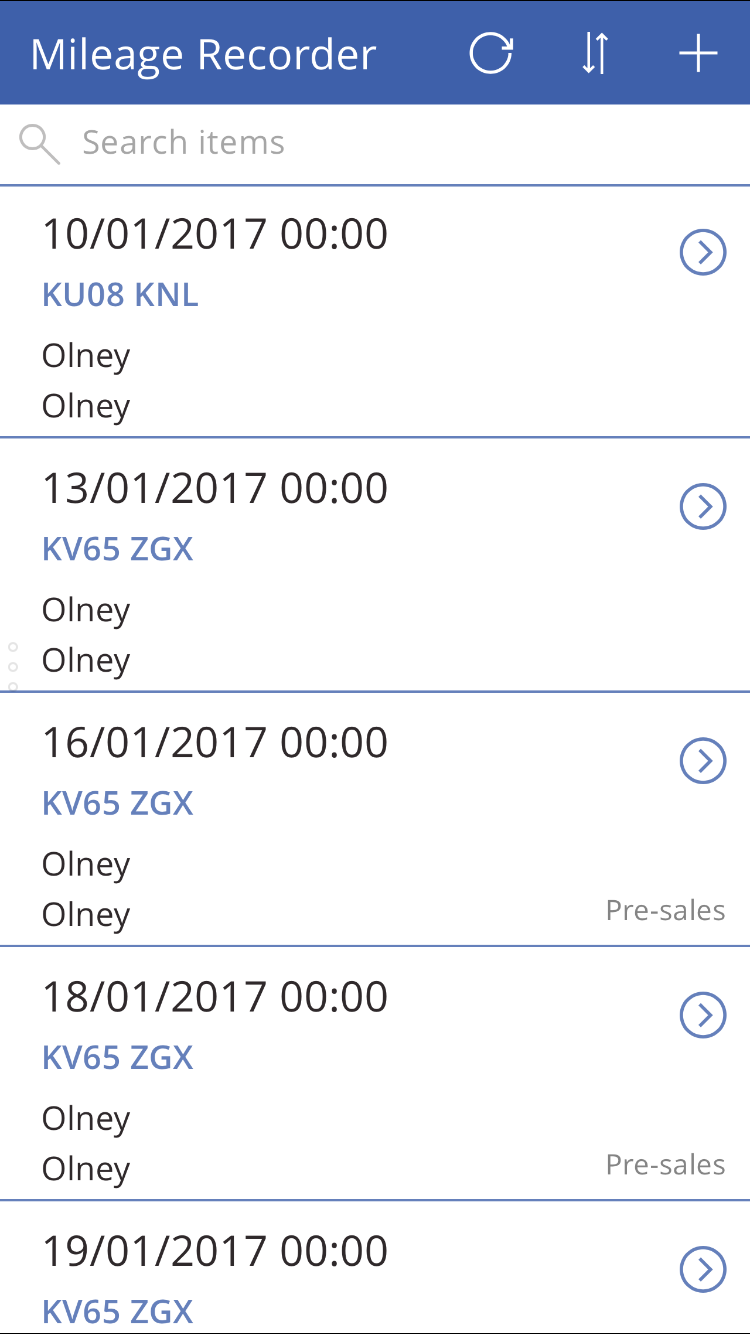
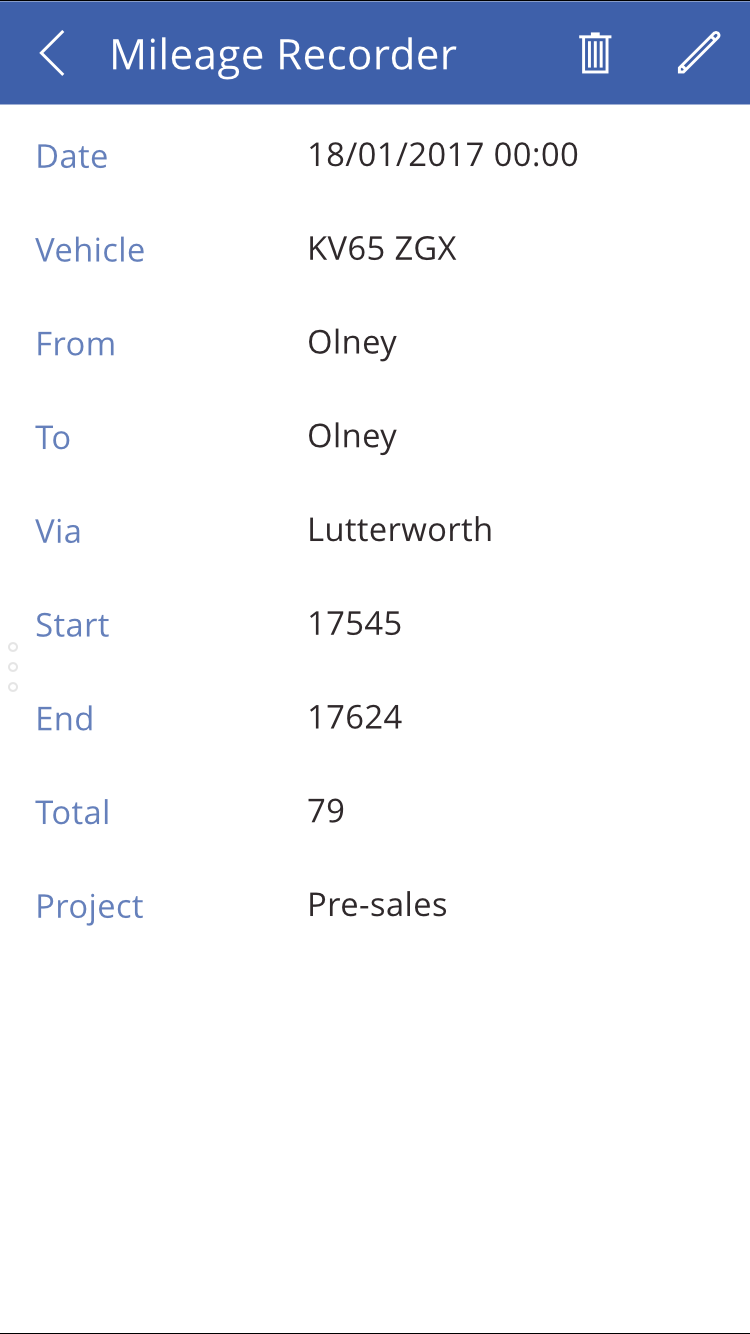
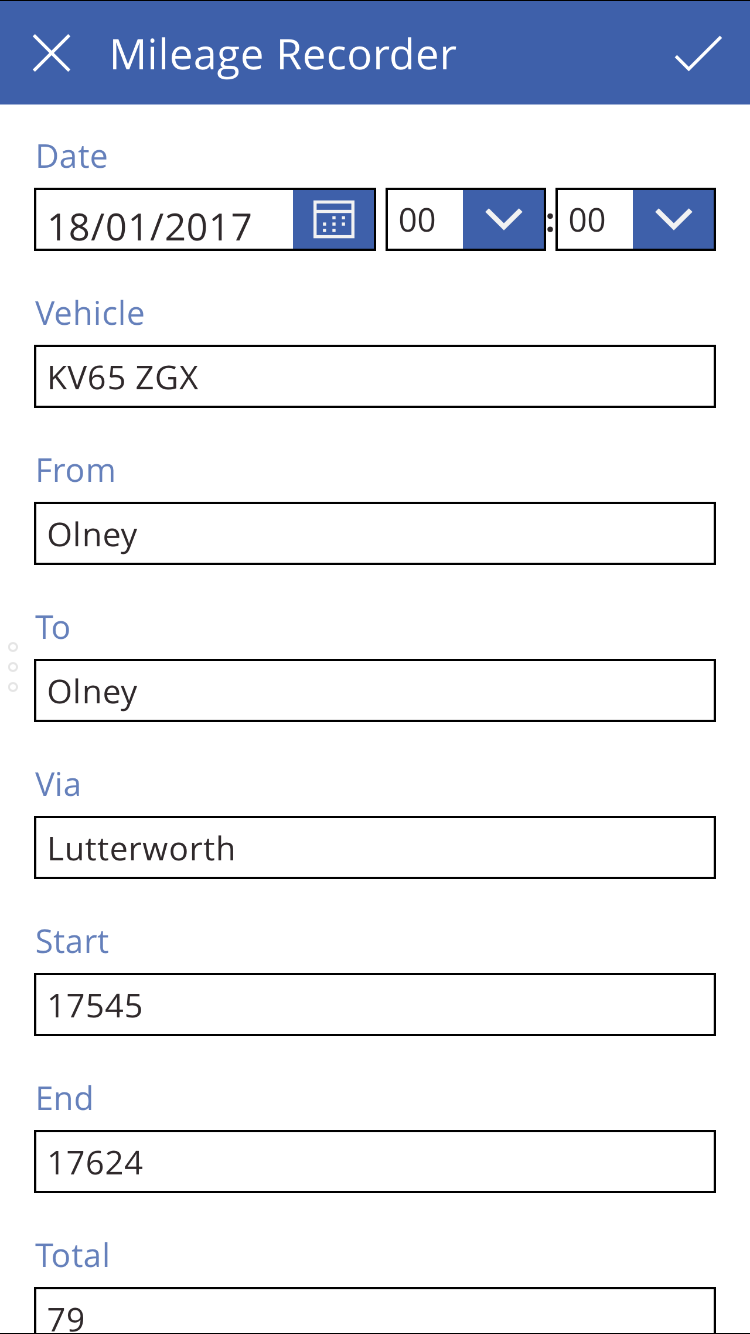
I haven’t looked in detail at the architecture used by PowerApps but essentially the PowerApps app provides a native OS wrapper for any apps that I create. This means my app will work on any platform where PowerApps is supported.
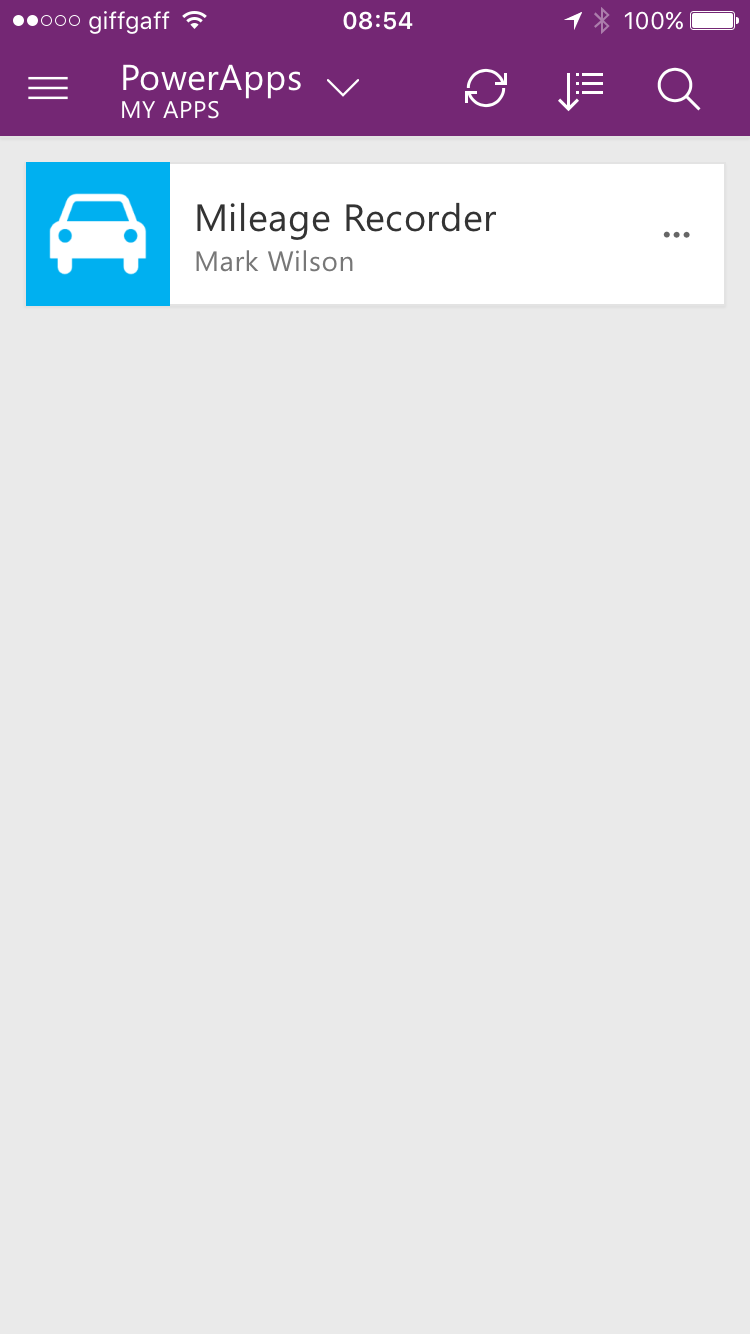
I can also create a direct link to the app on my phone’s home screen but the look and feel is one of a PowerApps app – not a native application. None of that is an issue – if I want more complex cross-platform apps then someone who can cut code (not me!) can use Xamarin – but for a simple app, PowerApps seems to do the job.
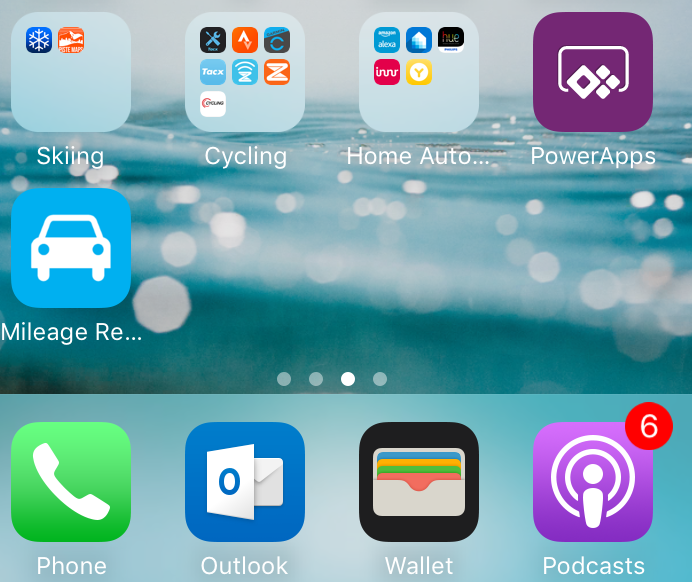
The PowerApps documentation helped me out a lot – and these were the tutorials I found most useful:
- Generate an app from Excel data.
- Getting started with formulas.
- Customise a layout in PowerApps.
- Show text and format dates and times in Microsoft PowerApps.
There’s also a useful Q&A on using PowerApps within an organisation.
I did have some challenges worth noting but none are show-stoppers:
- The Windows 10 smartphone that I use for work doesn’t meet the PowerApps hardware requirements, which is a little bizarre. So, I needed to use the app on my personal iPhone. I had created my PowerApp using my employer’s Office 365 tenant and a data source in my work OneDrive but I also use the Outlook app on iOS to connect to my personal Office 365 tenant. This combination was causing challenges that required re-authentication. I couldn’t find an easy way to move the app between tenants (though I’m sure there is one) so I moved the data source to my own tenant and recreated the PowerApp. I’m pretty sure that there must be a proper way to import and export apps, I just haven’t found it yet!
- The web version of the PowerApps Studio seems a bit flaky at times but it is still a preview. Installing the Universal Windows Platform (UWP) version on a Windows 10 PC worked flawlessly though, even without any admin rights on my company Surface.
- I couldn’t work out how to make a date and time field work as a simple date field. I really don’t need to record the time of my journeys – just the date!
- PowerApps doesn’t support formulae in Excel workbooks. Instead, I had to apply some logic in the app to calculate the miles travelled, which displays in my app but doesn’t get written back to the data source. I’m pretty sure that’s fixable – I just haven’t worked out how, yet…
Is it really a good idea to let users create their own apps?
In my customer conversations, it’s quite common to hear IT people saying they don’t want their users creating PowerApps. I can see why – after all, we’ve all seen Access databases and Excel spreadsheets become “business-critical applications” that then create issues for the IT department. For what it’s worth, my view is that if something is really business critical, the business will invest resources into developing something that’s properly supportable. If it doesn’t reach that bar, then it’s not a business-critical app – and why would you prevent users from generating their own tools that help them to work more effectively, albeit unsupported by corporate IT?
To put it another way, people will do what they need to do to get things done, with or without IT’s blessing – so why not give them the tools to do things in a manner that integrates well with existing (supported) applications and services?
I’ll be at Microsoft tomorrow, attending a training event around PowerApps and Flow. That should give me a good opportunity to build on the experience from creating my Mileage Recorder. Together with PowerBI (something else I really need to learn more about) these technologies provide a trilogy of tools to empower users to do more with data. And on that note, I should probably end this blog post, as I’m starting to sound like a Microsoft marketing representative…
DO you have a copy of the excel doc you populated the app from? Just trying to get a feel for how to lay out columns / headers etc. Thanks.
Hi Jonathan, It’s just a worksheet with some tables in it. They do need to be formatted as tables though, rather than just columns of tabular data.